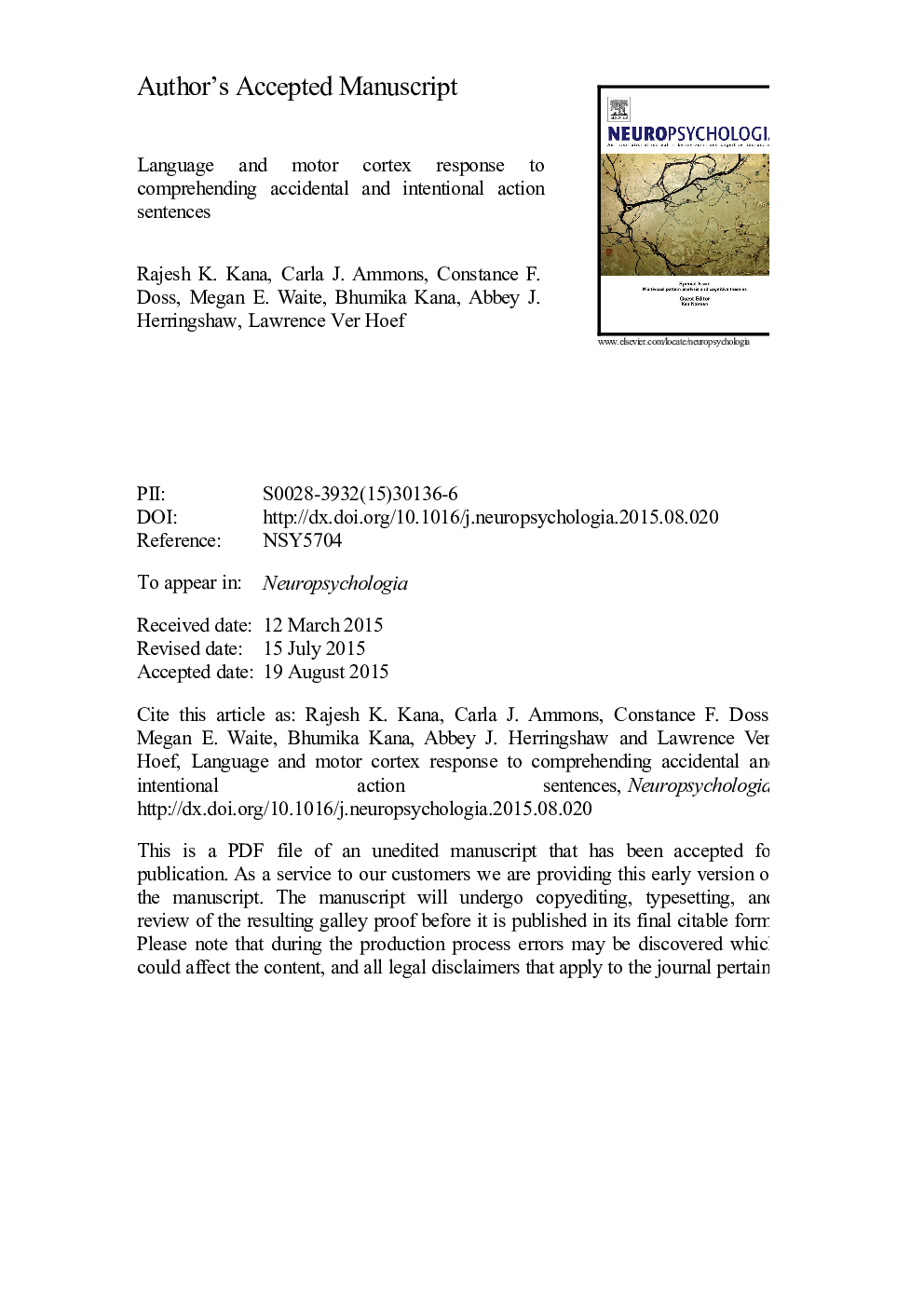| کد مقاله | کد نشریه | سال انتشار | مقاله انگلیسی | نسخه تمام متن |
|---|---|---|---|---|
| 7319705 | 1475576 | 2015 | 26 صفحه PDF | دانلود رایگان |
عنوان انگلیسی مقاله ISI
Language and motor cortex response to comprehending accidental and intentional action sentences
ترجمه فارسی عنوان
پاسخ زبان و پاسخ قشر مغزی به درک جملات عمل تصادفی و تصادفی
دانلود مقاله + سفارش ترجمه
دانلود مقاله ISI انگلیسی
رایگان برای ایرانیان
کلمات کلیدی
موضوعات مرتبط
علوم زیستی و بیوفناوری
علم عصب شناسی
علوم اعصاب رفتاری
چکیده انگلیسی
Understanding the meaning of others' actions involves mentally simulating those actions by oneself. Embodied theories of language espouse a prominent role for motor simulation in reading comprehension, especially when words, sentences, or narratives portray everyday actions. Inherent in these actions is the level of agency of the actor. Motor cortex activity in response to processing action verbs has been relatively well-established. What has been less explored, however, are: (1) the neural bases of determining whether an action is intentional or accidental (agency); and (2) whether agency influences level of motor simulation. This functional MRI study investigated how language and motor areas of the brain respond to sentences depicting intentional versus accidental action. 25 healthy adults read a series of sentences in the MRI scanner and determined whether the actions described were accidental or intentional. The main results include: (1) left hemisphere language areas (left inferior frontal gyrus, LIFG; left superior temporal gyrus, LSTG), premotor cortex (PM), and presupplementary motor area (pSMA) were strongly activated by both sentence types; (2) processing accidental action, relative to intentional action, elicited greater activity in LIFG, medial prefrontal cortex (MPFC), and left amygdala; no statistically significant activity was found in the opposite contrast; and (3) greater percent signal change was observed in LIFG while processing accidental action and in right precentral gyrus for intentional action. The results of this study support language and motor region involvement in action sentence comprehension in accordance with embodiment theories. Additionally, it provides new insight into the linguistic, integrative, and emotional demands of comprehending accidental action, its underlying neural circuitry, and its relationship to intentionality bias: the predisposition to ascribe purpose to action.
ناشر
Database: Elsevier - ScienceDirect (ساینس دایرکت)
Journal: Neuropsychologia - Volume 77, October 2015, Pages 158-164
Journal: Neuropsychologia - Volume 77, October 2015, Pages 158-164
نویسندگان
Rajesh K. Kana, Carla J. Ammons, Constance F. Doss, Megan E. Waite, Bhumika Kana, Abbey J. Herringshaw, Lawrence Ver Hoef,
